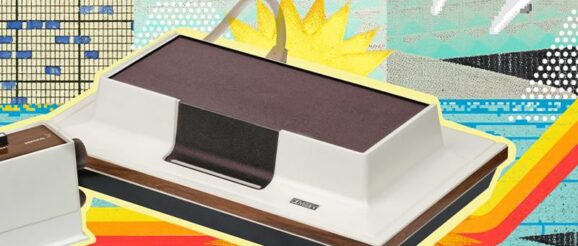The Failure of the Magnavox Odyssey Led the Way for the Future of Gaming | Innovation | Smithsonian Magazine

As long as there have been computers, people have been playing games on them. In the late 1940s, DuMont Laboratories’ “cathode-ray tube amusement device,” as the patent described it, allowed a user to aim an electromagnetic beam at plastic targets he placed on a cathode-ray tube. But this game and its successors, like “Tennis for Two” (1958) and “Spacewar!” (1962), were never marketed to the masses; they were largely curiosities for engineers and early programmers. The first home video game gadget was imagined in 1966 by Ralph Baer, who held a degree in television engineering from the American Television Institute of Technology in Chicago and was designing electronic training systems for Sanders Associates, a military contractor.
Conceiving the first profitable, non-broadcast use for the TVs that were now in almost every American home, he noticed that the military training devices he was developing seemed well suited for entertainment. Baer convinced Sanders to give him $2,500 and lend him two engineers in 1967 to develop a game for TV. The result was the Brown Box, which Magnavox licensed from Sanders in 1971 and released the following year, renaming it the Odyssey. It came with a master control unit, two blockish controllers and 12 electronic games, including “Cat and Mouse” and “Haunted House.” Magnavox released the Odyssey in 1972—the same year Atari’s “Pong” appeared—and while Magnavox boasted that the machine would offer “a total play and learning experience for all ages,” it sold a disappointing 350,000 units worldwide.
The Odyssey proved a commercial failure, but its use of interchangeable cartridges paved the way for systems like the Atari 2600 (1977) and the Nintendo Entertainment System (1983), which drew players out of arcades and back to the comforts of home.
Where, of course, they remain, thanks to the internet and multiplayer systems like the Xbox, PlayStation and Nintendo’s Switch. In 2006, Baer donated his prototypes and early schematics to the Smithsonian. He died in 2014 at the age of 92 in Manchester, New Hampshire. Today, 214 million Americans play games on consoles, computers and phones. Baer couldn’t have foreseen that his Brown Box would launch a $151 billion global industry and convert our world into one sprawling, chatty arcade.
This article is a selection from the December issue of Smithsonian magazine
